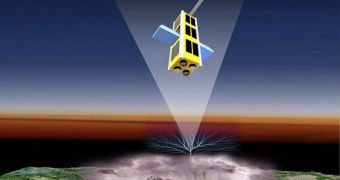Astronomers operating the NASA Fermi Gamma-Ray Space Telescope have recently announced that they will turn the observatory towards our planet, in a bid to study the peculiar and mysterious events that terrestrial gamma-ray flashes (TGF) are. These events occur during very powerful storms, but thus far experts have had no idea as to why this is happening. Additionally, healthcare scientists still don't know what long-term effects the exposure to TGF causes in people traveling aboard airplanes fairly often. The Fermi investigation will hopefully provide some answers in this matter, Space reports.
The thing about TGF is that they happen incredibly fast, and last for a very short period of time. However, they discharge a large amount of radiation around them, as they are being generated, which may pose a health risk for people on airplanes. A number of studies have been conducted on their threat level, but thus far results have remained largely inconclusive. It is estimated that a millisecond-long blast of TGF could expose people to the equivalent of about 400 chest X-rays. Naturally, this amount is extremely large, and can cause significant health side-effects.
Experts believe that Fermi may be uniquely qualified to take on these new observations. The instrument was originally designed to hunt for gamma-ray bursts, which are the most powerful types of explosions in the entire known Universe. Photons produced during these events are extremely energetic, and the detectors on Fermi are highly capable of creating the most accurate recordings possible. Therefore, given the proximity its orbit has to the altitude at which TGF form, it may be that the detectors will have a much easier time at picking up photons emanating from these atmospheric events.
One particular sensor on the renowned observatory is of particular interest to astronomers. “Fermi-GBM [Gamma-Ray Burst Monitor] has the broadest energy coverage and highest sensitivity of any instruments that have observed, or will observe TGFs” astrophysicist Jerry Fishman, who is based at the NASA Marshall Space Flight Center, in Huntsville, Alabama, explains. “Their spectrum [energy spread] is unlike anything ever seen from cosmic gamma-ray objects,” the expert adds. This study will also provide a chance for Fermi mission managers to test their skills on a target that is incredibly close to the telescope.

 14 DAY TRIAL //
14 DAY TRIAL //